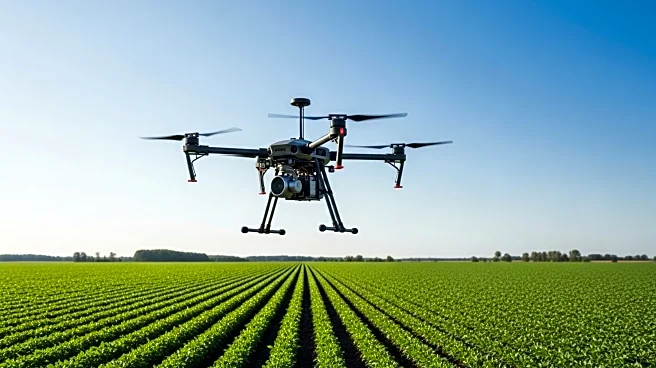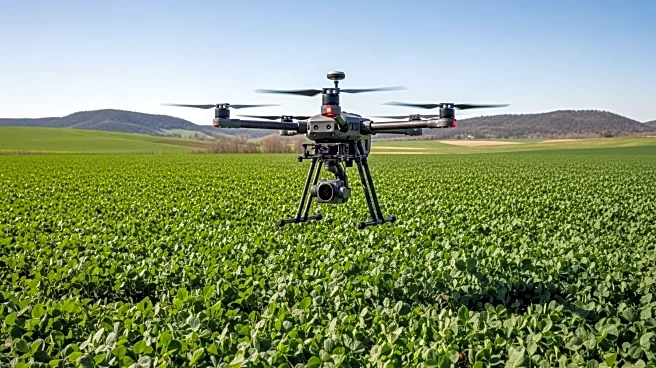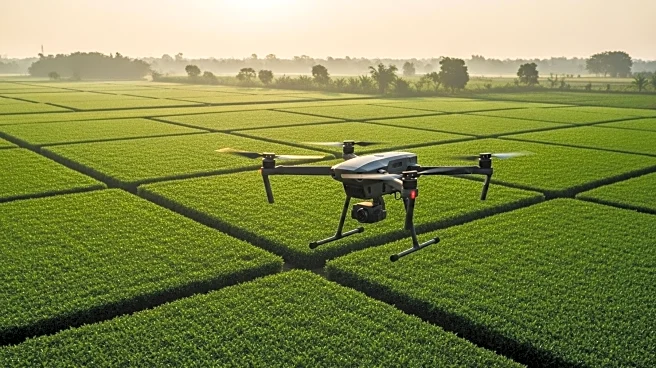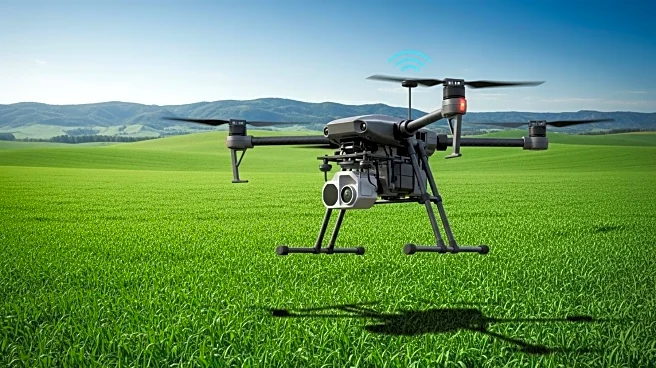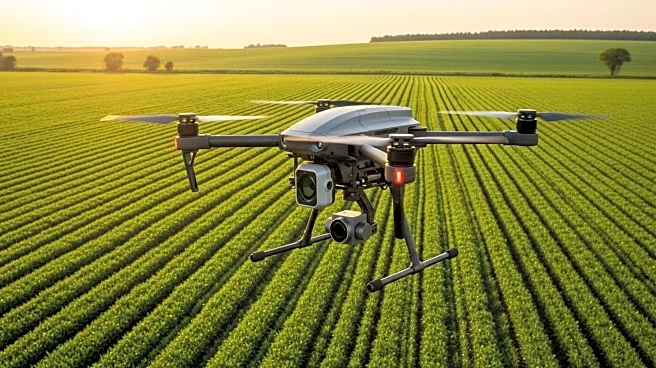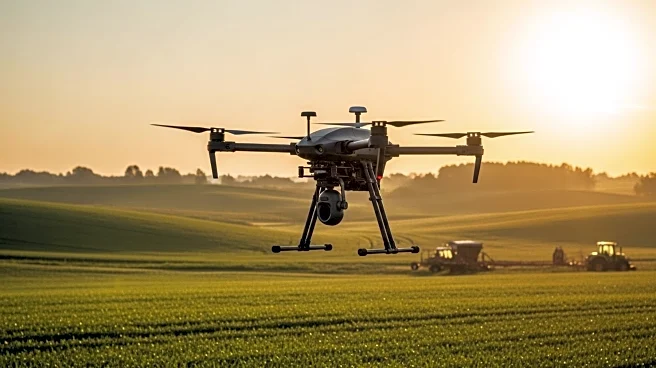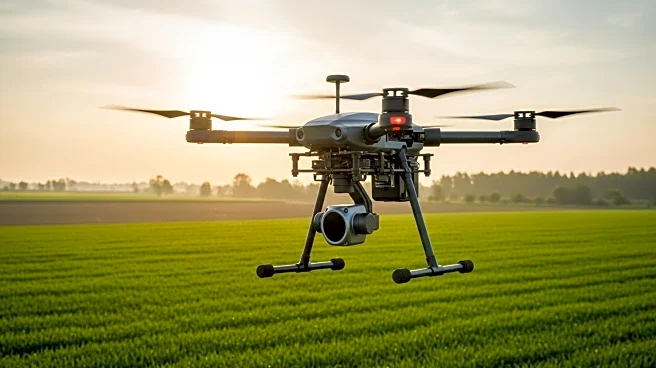What's Happening?
A new report from the Association of Equipment Manufacturers (AEM) highlights the significant resource savings achieved through precision agriculture practices in the United States. The study reveals that fertilizer use has decreased by 8%, avoiding the application of 4 billion pounds, with potential for further reductions. Herbicide use has declined by 9%, preventing 54 million pounds from entering the environment. Additionally, farmers have saved 147 million gallons of fuel, equivalent to removing nearly 283,000 cars from the road. Precision agriculture employs technologies such as GPS guidance, soil sensors, drones, and data-driven decision-making systems to optimize input application, reduce waste, and improve productivity.
Why It's Important?
The adoption of precision agriculture is transforming farming practices, leading to more efficient and sustainable food production. By reducing the use of fertilizers, herbicides, and fuel, precision agriculture contributes to environmental conservation and resource management. These practices not only benefit farmers economically but also support broader efforts to stabilize the food supply chain amid growing global demand. The report underscores the role of technology in driving agricultural innovation, positioning the U.S. as a leader in sustainable farming. As precision agriculture continues to evolve, it may set new standards for resource management and environmental stewardship in the agricultural sector.
What's Next?
The continued advancement of precision agriculture technologies is likely to further enhance resource efficiency and sustainability in farming. As more farmers adopt these practices, the agricultural industry may see increased collaboration with technology providers to develop new tools and systems. Policymakers and industry leaders may focus on supporting precision agriculture through incentives and research funding to maximize its benefits. The report's findings could also influence future agricultural policies aimed at promoting sustainable practices and reducing environmental impact.
